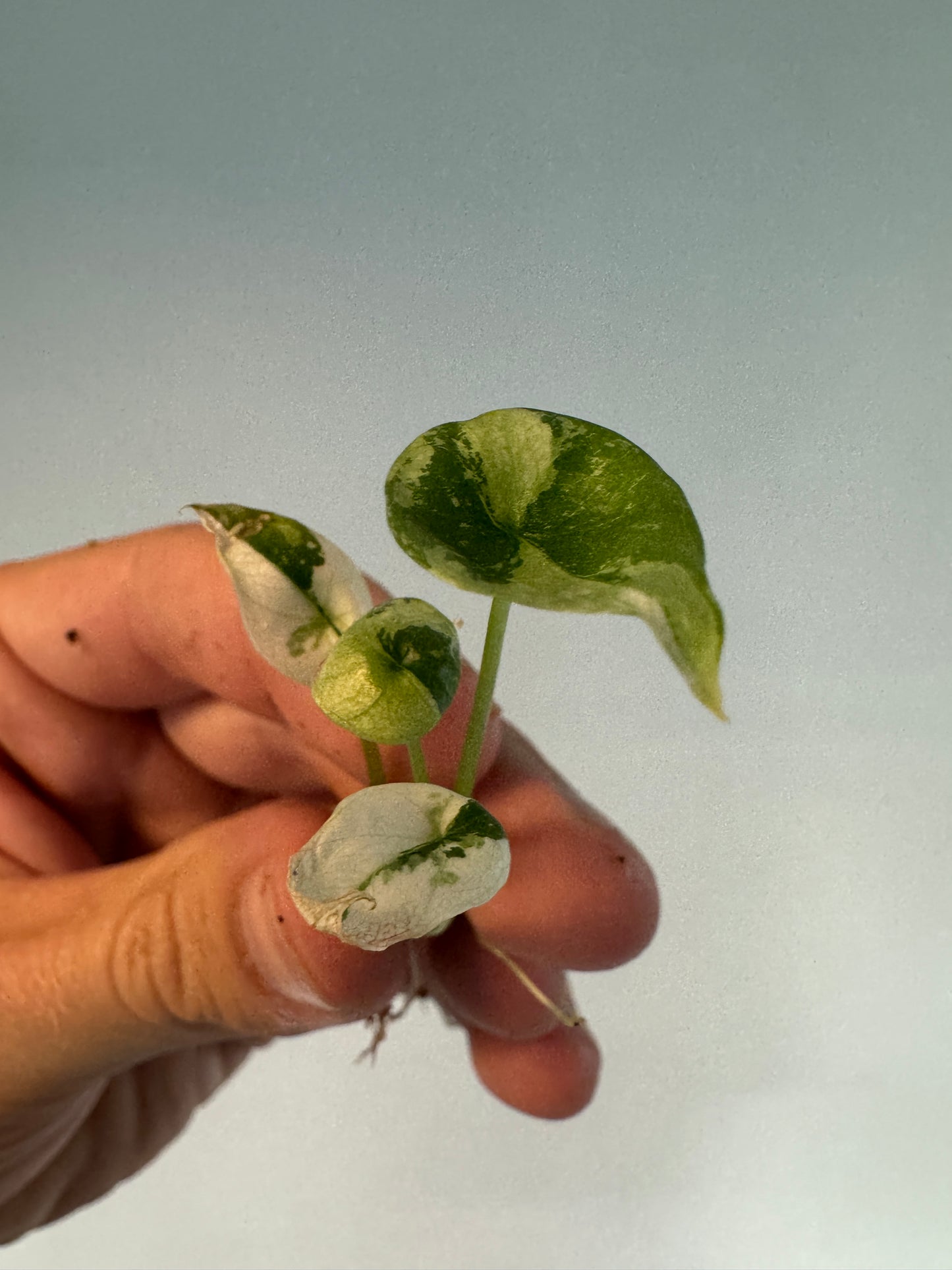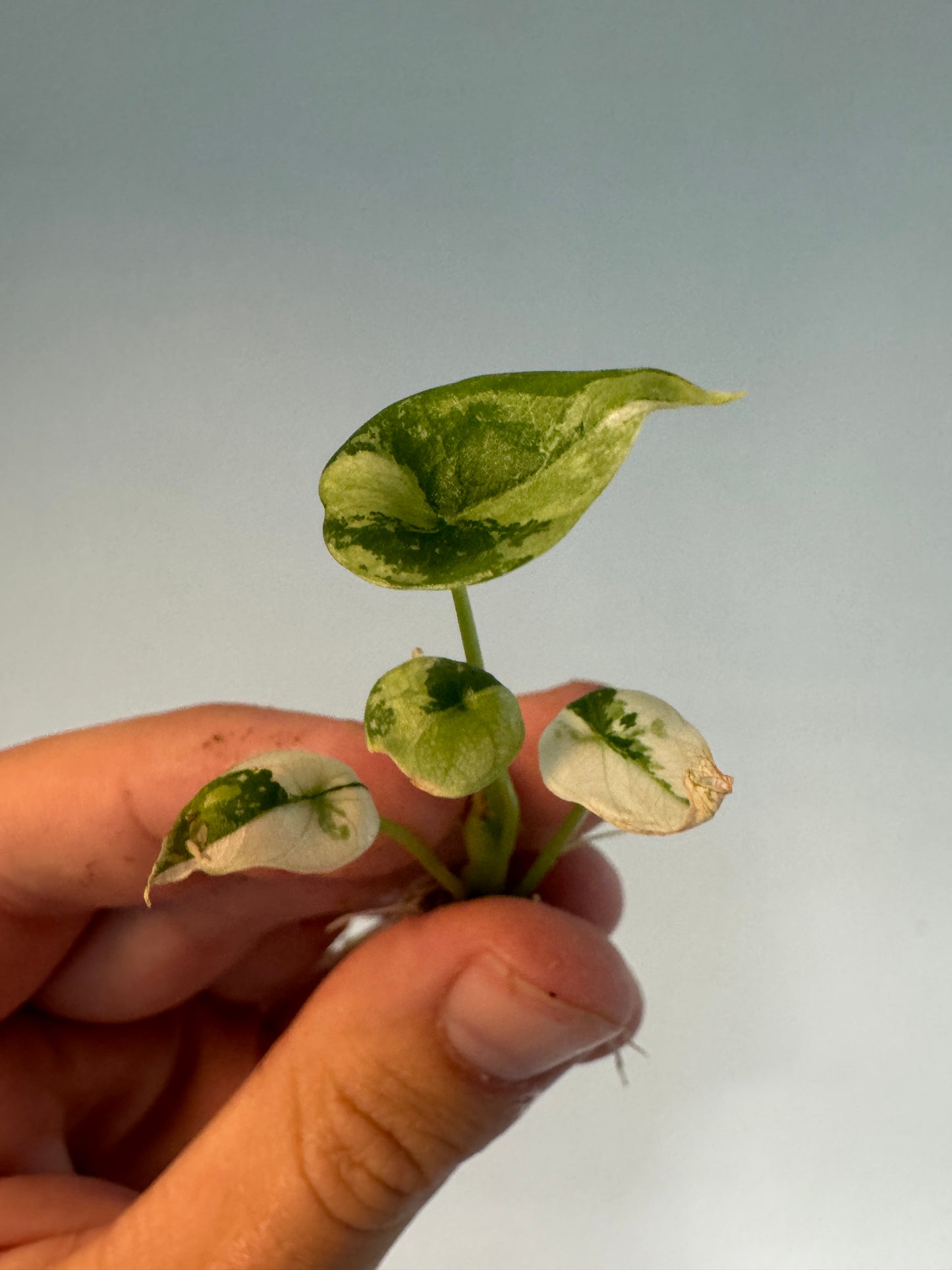Plantthatplant
Alocasia sinuata ’Quilted Dreams’ variegata
Alocasia sinuata ’Quilted Dreams’ variegata
Couldn't load pickup availability
Share
The plant in the pictures might not be the one you get but all looks great!
Heritage and Origin
Alocasia sinuata 'Quilted Dreams' Variegata is a rare and exquisite tropical plant known for its uniquely quilted, heart-shaped leaves with stunning variegation. The leaves display a striking pattern of deep green and creamy white, making it a true collector's plant. Originating from the tropical rainforests of Southeast Asia, particularly the Philippines, this Alocasia is part of the Araceae family. The species name "sinuata" refers to the undulating, wavy leaf margins that give the plant its characteristic quilted appearance.
Care Requirements in a Scandinavian Indoor Setting
Caring for Alocasia sinuata 'Quilted Dreams' Variegata in a Scandinavian indoor environment, where light and humidity levels can be challenging, requires special attention to replicate its tropical habitat.
-
Light Requirements:
- Optimal Light: This variegated Alocasia thrives in bright, indirect light to maintain its vibrant leaf colors. In a Scandinavian setting, where natural light may be limited during the winter, placing the plant near an east-facing window is ideal to provide it with gentle morning light. Variegated plants are more sensitive to light, so avoid direct sunlight, which can scorch the leaves.
- Supplemental Lighting: During the darker months, especially in winter, consider using LED grow lights to provide additional light. A full-spectrum light that mimics natural sunlight will help maintain the plant’s health and variegation.
-
Temperature and Humidity:
- Temperature: Alocasia sinuata 'Quilted Dreams' Variegata prefers warm conditions, ideally between 18-24°C (65-75°F). Scandinavian homes are generally well-heated, but it's important to avoid placing the plant near cold drafts or radiators that could cause temperature fluctuations.
- Humidity: This plant requires high humidity, ideally between 60-80%. In Scandinavian climates, especially during winter when indoor air tends to be dry, using a humidifier or placing the plant on a humidity tray can help maintain the necessary moisture levels. Regular misting can also benefit the plant, but ensure the leaves dry quickly to prevent fungal issues.
-
Watering:
- Watering Schedule: Alocasia sinuata 'Quilted Dreams' Variegata prefers consistently moist but not waterlogged soil. Water the plant when the top inch of soil feels dry, using room-temperature water. Good drainage is essential, so choose a pot with drainage holes and a well-draining soil mix.
- Watering Tips: During the growing season (spring and summer), you may need to water more frequently, but reduce watering in autumn and winter when the plant's growth slows. It's important to avoid letting the plant sit in standing water, as this can lead to root rot.
-
Soil and Potting:
- Soil Mix: This Alocasia thrives in a well-draining, airy soil mix. A combination of peat or coconut coir, perlite, and orchid bark works well, providing the right balance of moisture retention and aeration. This soil mix mimics the plant’s natural epiphytic environment.
- Repotting: Repot the plant every 1-2 years or when it outgrows its pot. When repotting, handle the roots carefully to avoid damage, and use a slightly larger pot to give the roots room to grow without overwhelming them with excess soil.
-
Fertilization:
- Feeding: During the growing season, feed Alocasia sinuata 'Quilted Dreams' Variegata every 4-6 weeks with a balanced, diluted liquid fertilizer. This will support the plant's growth and enhance the vibrant variegation of its leaves. Reduce feeding in the autumn and winter months when the plant's growth naturally slows.
-
Pest Control:
- Common Pests: Like other Alocasias, this plant can be susceptible to common pests such as spider mites, aphids, and mealybugs. These pests thrive in dry conditions, so maintaining high humidity can help deter them.
- Prevention and Treatment: Regularly inspect the plant, particularly the undersides of the leaves, for any signs of pests. If pests are detected, treat the plant with insecticidal soap or neem oil, and increase humidity levels to discourage spider mites.




